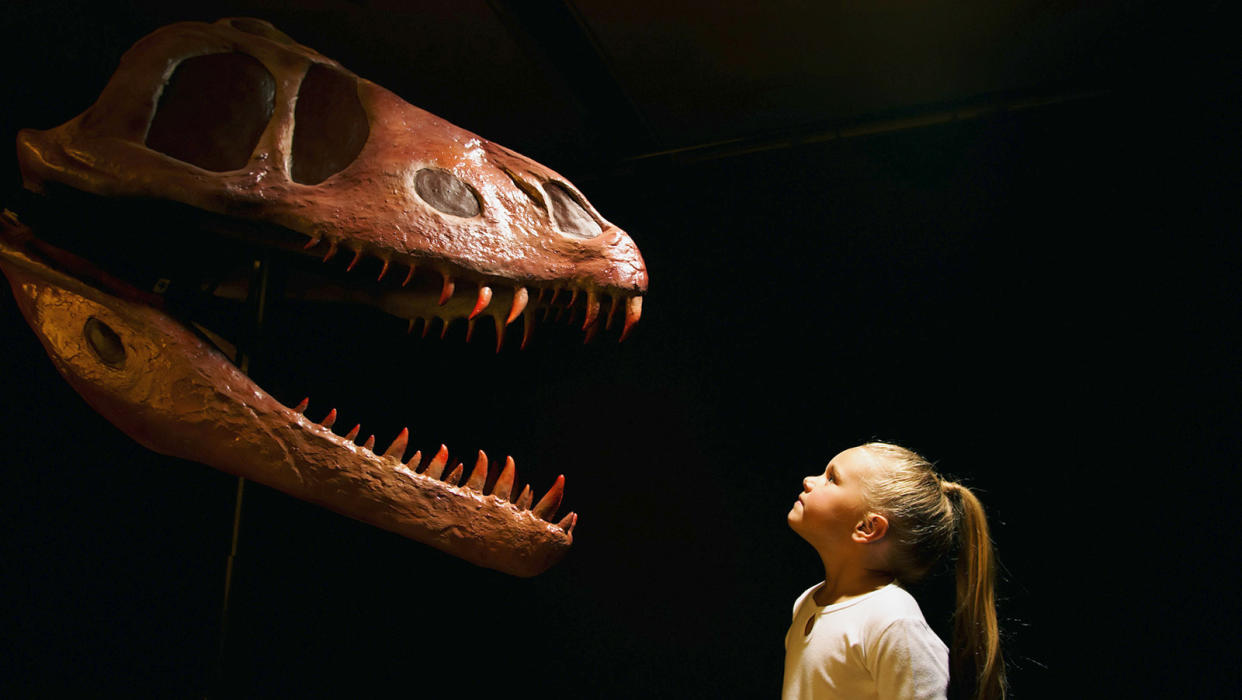Are Dinosaurs Still Alive?

Have you ever peered into the skies, seen a bird swoop gracefully overhead, and wondered, "Are dinosaurs still alive?"
It's not such a far-fetched query when you consider that modern birds are like living, breathing dinosaurs that have swapped scales for feathers, but the reality isn't nearly as dramatic as "Jurassic Park" and "Jurassic World" may lead you to believe.
Birds: Flying Descendants of Dinosaurs
Birds are the only direct descendants of theropod dinosaurs. In an evolutionary sense, they're the closest thing we have to living dinosaurs. The theropods — which include the Tyrannosaurus rex, velociraptor and other dinosaurs — were a diverse group of bipedal carnivores.
However, not all theropods were terrifying giants. Some were quite small and likely covered in feathers, leading scientists to believe that these feathered theropods are the ancestors of our modern birds.
The way theropod dinosaurs gradually evolved into birds showcases the adaptability of life and natural selection. The fossil record shows a gradual evolution in theropods towards the birds we see today.
Key changes included the development of a wishbone, the fusion of bones to form a stronger, more lightweight skeleton and the evolution of feathers from simple filaments to complex structures capable of flight.
The traits that define modern birds — feathers, a beak without teeth and the laying of hard-shelled eggs — were all present in some form in their dinosaur ancestors.
In fact, the Archaeopteryx, often considered the first bird, provides a snapshot of this transition. With its mix of avian and reptilian features, it helps us visualize the intermediate stages of this evolutionary journey.
Living Fossils
Moving beyond the realm of the ancient and extinct, we find a plethora of creatures that have retained characteristics reminiscent of the dinosaur era. These beings are often referred to as "living fossils," a term indicating that they have remained relatively unchanged for millions of years.
Take the crocodiles, for example. These powerful reptiles are part of a lineage that has been on Earth for about 200 million years, making them one of the closest living relatives of dinosaurs.
Their body plan has remained largely the same, a design so efficient that evolution has had little need to alter it. Similarly, sharks, which predate the dinosaurs, have maintained a consistent form with minimal evolutionary changes.
Another noteworthy example is the humble chicken, a direct descendant of the mighty Tyrannosaurus rex. It's not just a playful comparison; genetically, the chicken shares a substantial amount of DNA with T. rex, making it a tiny, feathered version of its colossal ancestor.
Scientific Evidence of Extinction
The term "extinct" carries a certain finality, but it's grounded in the hard evidence scientists have collected over the years. Fossils, from sharp teeth to massive bones, serve as the conclusive argument in the case against the existence of living, non-avian dinosaurs.
And while we relish the idea of dinosaurs still thriving in some concealed corner of the planet, the evolutionary innovations that once enabled their dominance have since been passed down to birds.
This article was updated in conjunction with AI technology, then fact-checked and edited by a HowStuffWorks editor.
Lots More Information
Related Articles
Sources
Borrell, Brendan. "Why Sharks Have No Bones." Nature. Jan. 8, 2014. (Jan. 19, 2015) http://www.nature.com/news/why-sharks-have-no-bones-1.14487
Brumfiel, Geoff. "Birds of a Feather Aren't Necessarily Related." NPR. Dec. 11, 2014. (Jan. 19, 2015) http://www.npr.org/blogs/health/2014/12/11/370087804/birds-of-a-feather-arent-necessarily-related
Nosowitz, Dan. "7 Amazing Living Fossils." Popular Science. Aug. 21, 2013. (Jan. 19, 2015) http://www.popsci.com/science/article/2013-08/7-weirdest-and-cutest-living-fossil-mammals
Radford, Benjamin. "Do Dinosaurs Still Exist?" Live Science. June 4, 2009. (Jan. 19, 2015) http://www.livescience.com/3632-dinosaurs-exist.html
Radford, Benjamin. "Mokele-Mbembe." Live Science. Aug. 13, 2013. (Jan. 19, 2015) http://www.livescience.com/38871-mokele-mbembe.html
Shiffman, David. "Shark Week Is Lying Again." The Daily Beast. Aug. 15, 2014. (Jan. 19, 2015) http://www.thedailybeast.com/articles/2014/08/15/shark-week-is-lying-again-megalodon-is-definitely-extinct.html
Original article: Are Dinosaurs Still Alive?
Copyright © 2023 HowStuffWorks, a division of InfoSpace Holdings, LLC, a System1 Company

